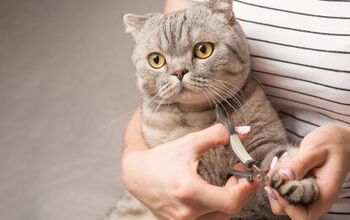Canadian Veterinarian Medical Association Opposes Declawing In Cats

Calling the declawing of domestic cats unnecessary and avoidable pain, the Canadian Veterinary Medical Association has taken a stronger stance against the process.
Dr. Troy Bourque is the Association’s president and said that cats who under go the surgery as an elective procedure suffer needlessly and they stand against it. He says that the Association believes elective declawing does not offer any advantage to the cat and is unacceptable as the potential for negative behavioral and physical side effects is unknown as a result.
Related: Claws Are Coming Out In The Battle Over Cat Declawing
The new guideline is being sent to 7,000 members of the association in Canada, and calls elective declawing non-therapeutic partial digital amputation. They hope to raise awareness among the general public so that fewer cat owners request the surgery.
Individual veterinarians have the right to decide whether they’ll follow the guideline, and it’s likely that many won’t as some supporters say that banning the practice will then result in greater numbers of cats being unadopted and surrendered as pet owners want to protect their furniture. Some claim that under anesthesia, the procedure is safe with little effect after.
But the Association does not believe that to be the case, and says that declawing is amputating part of a cat’s bones in their toes–for sheer convenience for owners. The statement says that scratching is normal for cats and also helps them climb and defend themselves. Amputating for the sake of convenience is like a person having the tips of their fingertips to the first joint cut off.
Dr. Sherlyn Spooner is with the Association and helped develop the guidelines. She said that declawing is less popular in Canada than it used to be, but that the demand still exists and they want people to know what the effects on their cats is. Spooner says that there is no advantage to the cat whatsoever, and can even make non-aggressive cats become aggressive after the procedure.
The Association hopes that veterinarians will educate owners about alternatives to declawing, with a particular focus on training and sprays to deter scratching furniture.
Related: Study: Declawing Cats Has Long-Term Impact on Behavior
This guideline is not uncommon. Elective declawing is already banned in Europe, the United Kingdom and in several California cities. New Jersey is even considering a ban unless the veterinarian deems the procedure truly medically necessary.
Prior to the new guideline, the Association opposed the procedure but left room for it to be okay in some circumstances. Spooner says that is no longer the case, and they strongly oppose it with no exception.

More by Lori Ennis






















